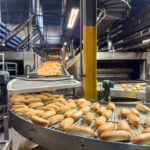Let’s be real—marketing in the food and beverage world isn’t just about catchy logos and trendy Instagram posts anymore. It’s about results. Sales. Shelf movement. Real impact. And if you’re not getting a solid return on investment from your current efforts, it’s time to rethink the playbook.
Because in today’s market, a smart food and beverage marketing strategy isn’t optional. It’s survival.
Why Strategy Isn’t Just a Buzzword (It’s the Backbone)
Think about it. You’ve poured time, money, and passion into creating a food or drink product. You’ve got something great. But great doesn’t sell itself—at least not for long.
Without a solid marketing strategy behind it, even the most innovative product can get buried under the noise. Or worse, misunderstood.
That’s where clarity, positioning, and targeted messaging step in. It’s not just about being seen—it’s about being seen by the right people, at the right moment, with the right message.

Know Your People (Seriously, Know Them)
No, really—who are you talking to?
This isn’t about vague demographics like “millennials who snack.” You’ve got to dig deeper. What motivates them? What frustrates them at 3 PM when they’re hungry? What brands do they trust? What do they wish existed in the market?
When we work with clients through our food beverage consulting services, this is one of the first areas we unpack. Because without audience insight, everything else is a shot in the dark.
Quick tip: Don’t guess. Run polls. Read reviews. Dive into Reddit threads. Ask real questions and actually listen to the answers.
Craft a Brand Story People Want to Root For
You’re not just selling a granola bar or a flavored sparkling water. You’re selling a feeling, a belief, a moment. That’s what a story does.
Maybe your brand was born out of a health journey. Maybe it’s rooted in family tradition or cultural pride. Whatever it is, your story is your hook. It makes you memorable. Relatable. Worth buying into.
And no, this doesn’t mean crafting some perfect marketing narrative. Be real. Be a little messy, even. People connect with honesty far more than perfection.
Packaging: Your Silent Salesperson
Let’s not sugarcoat it—if your packaging doesn’t pop, you’re losing money. Consumers don’t read back labels unless you first get their attention.
Design should match your brand voice. Are you playful? Premium? Clean? Bold? The look and feel of your product should scream it—loud and clear—from the shelf or screen.
And remember: in retail, your packaging is your first impression. In e-commerce, it’s your second (right after your product photos). Either way, it needs to pull its weight.
Digital is King (But Print Isn’t Dead)
A strong food and beverage marketing strategy lives online. Social media, email campaigns, paid ads, influencer partnerships—these channels drive awareness and sales.
But don’t sleep on traditional methods, especially in the food space. Product samplings, trade shows, shelf talkers, and good ol’ word-of-mouth? Still work. In fact, sometimes a well-timed store demo outperforms a TikTok campaign. True story.
It’s all about balance. Use digital to scale your voice and traditional methods to deepen the connection.
Test, Fail, Learn, Repeat
Not every campaign will be a win. And that’s okay. What matters is that you’re tracking what’s working and what isn’t.
Tweak your messaging. Try a new call-to-action. A/B test your emails. Launch two flavors side by side and see which one flies faster.
At Seven Claves, we help clients develop custom strategies with this built-in agility. Because no strategy should be static. Markets shift. People change. Your approach needs to keep up.
Influencers Are Not One-Size-Fits-All
Here’s a hot take: Micro-influencers often outperform celebrities. Why? Trust.
Smaller creators tend to have tight-knit communities. Their audience actually listens to them. So while one mega-post might look impressive, 10 micro- shout outs might get you better engagement—and more conversions.
That said, always vet carefully. Do their values align with yours? Are their followers real humans, or bots?
(P.S. Influencer marketing is something we handle a lot in our food beverage consulting work. Happy to share tips if you’re stuck.)
Community is the New Currency
Want to build a brand that lasts? Build a community, not just a customer base.
Create a space where your fans feel seen. Highlight their stories. Respond to their comments. Make them feel like insiders. When they love your brand, they’ll bring others along for the ride.
And guess what? Community builds loyalty. Loyalty builds repeat purchases. And that’s how you maximize ROI over the long haul.
Data: Your Not-So-Secret Weapon
I know, I know—data sounds boring. But nothing boosts ROI like knowing your numbers.
Which ad converted best?
What was your email open rate?
How did your last product launch perform in California vs. New York?
If you’re not looking at the data, you’re marketing blindfolded. No thanks.
Use tools. Build dashboards. Or better yet, work with folks who know how to translate numbers into action. (Yep, this is where food beverage consulting pays for itself.)
Final Thoughts
If there’s one takeaway here, it’s this: there’s no magic formula. What works for a probiotic soda brand might flop for an upscale pasta sauce. That’s why a tailored, flexible food and beverage marketing strategy is key.
Start with your story. Know your people. Test everything. And always—always—stay close to the data.
Need a hand making it all come together?
At Seven Claves, we help brands navigate the wild, wonderful world of food marketing. From concept to shelf (and beyond), we’re in your corner. So if you’re serious about turning heads and profits, let’s chat.

